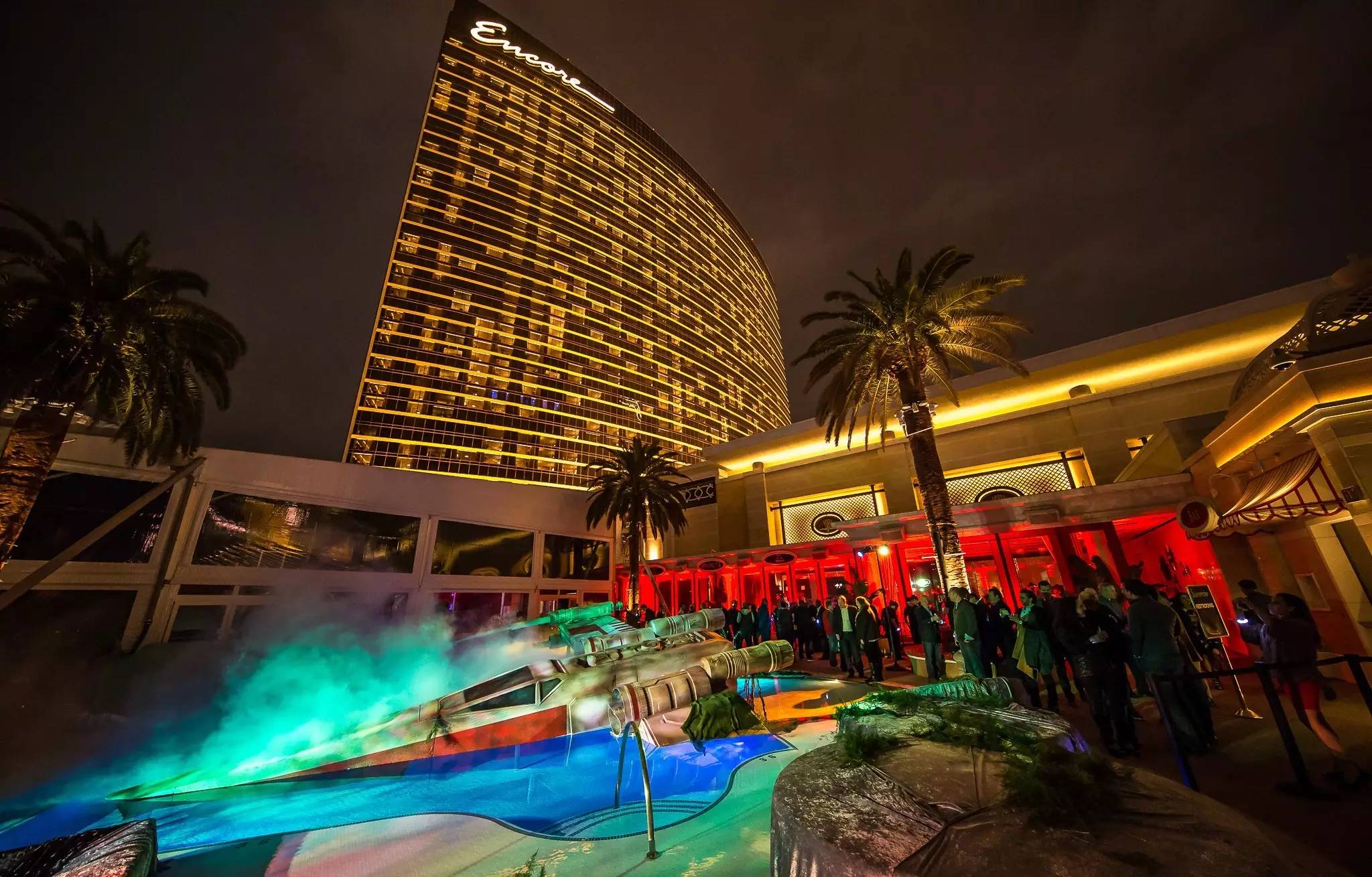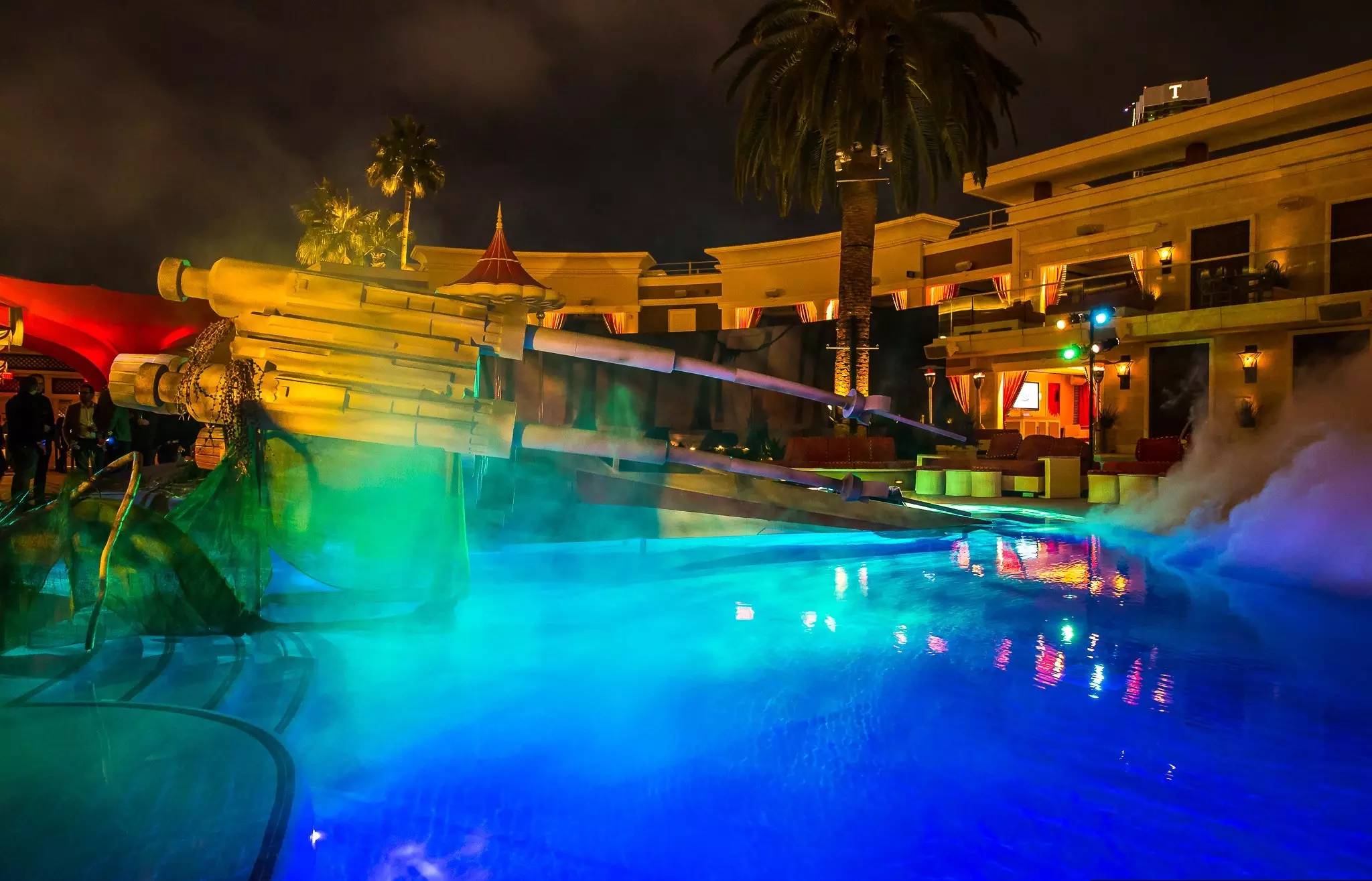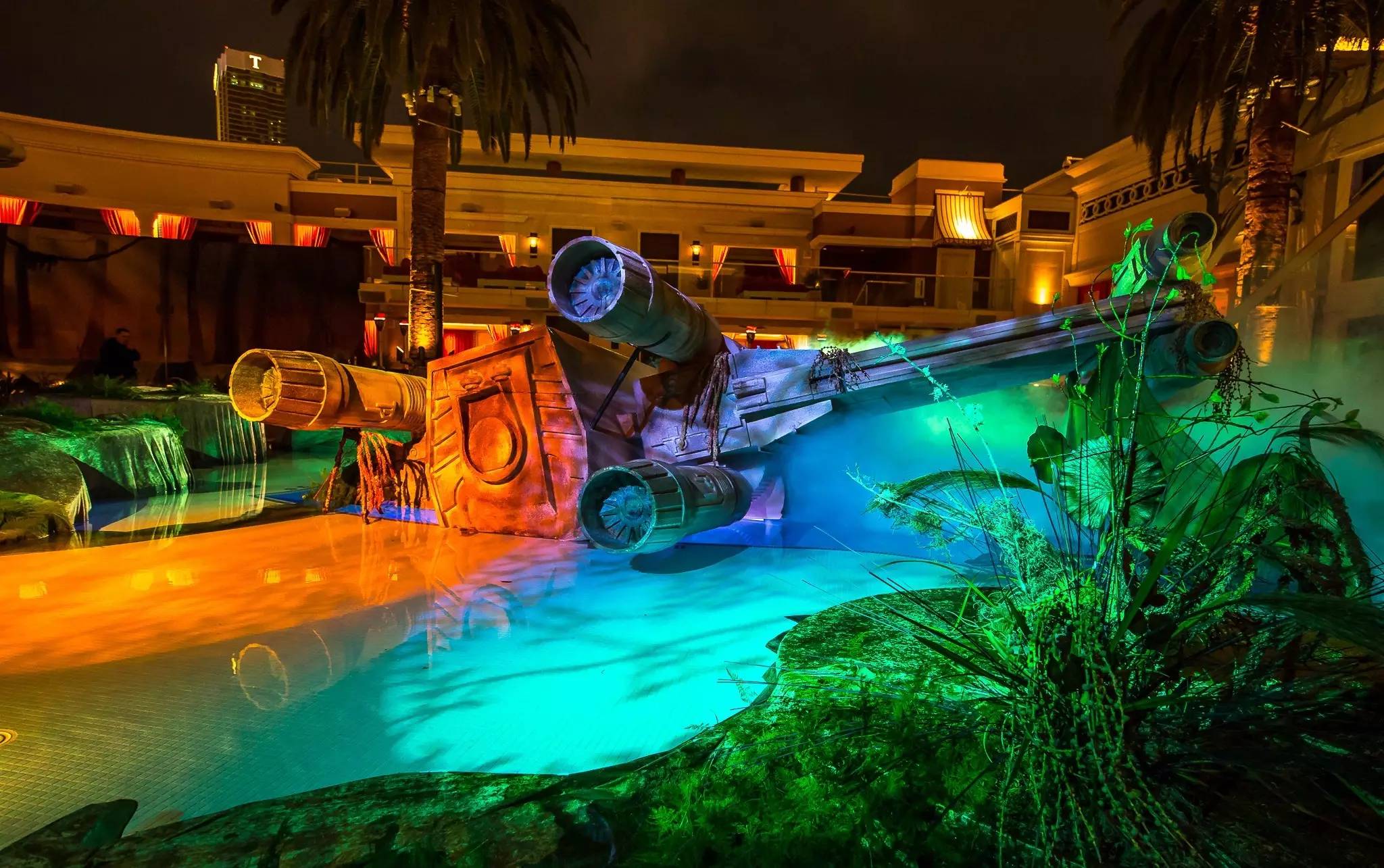舞曲到底是什么音乐风格?刷新中国DJ行业20年错误认知。
国内DJ行业对舞曲这个词的认知就是:电子音乐+HIPHOP+R&B。这个理解方式是绝对错误的。我始终没想明白这个理解到底是谁编出来的。我一直知道这样的理解或者统称方式是错的,但是也一直有拖延症,没有真正墙出去查舞曲的正确定义。不过昨天算真正墙出去查了一下DANCE MUSIC,包括谷歌上的一些外国网站和英文维基百科。
如果大家对西方制作人有了解的就知道,很多很多电音制作人,都会自称舞曲制作人,但是从来没有一个HIPHOP制作人、R&B制作人会自称舞曲制作人。包括skrillex、tiesto、黑手党,knife party都自称过舞曲制作人。但在我早期听HIPHOP和R&B那会儿也了解过不少HIPHOP和R&B,从来都没有人会说自己是舞曲制作人。所以把舞曲理解为电子音乐+HIPHOP+R&B的统称一定是错误的,错就错在把HIPHOP和R&B乱列入舞曲里20年。也毫不夸张地说,中国DJ行业,20年来对舞曲这个词的认知都是错误的。
包括格莱美也好,soundcloud也好,beatport也好,B榜也好,它们上面的舞曲也从来都没有HIPHOP和R&B什么事。还有很多很多跟舞曲有关系的西方网站,上面的舞曲都跟HIPHOP、R&B扯不上几毛钱关系。

为证明权威性,老规矩,我今天仍然会拿英文维基百科做参考资料,并且进行自己的简单概括翻译。中国DJ行业错了20年就是错了20年,没什么怕别人纠正的,全都错了就是全都错了,别因为错的人多就觉得那是对的。把舞曲理解成电子音乐+HIPHOP+R&B的统称本来就挺蠢的。任何音乐风格,即使是音乐风格的统称,也都不应该总拿词汇的字面意思去理解,我们应该真正理解一个词的实际含义而不是啥都逐字翻译只翻译个字面。
以下是英文维基百科对舞曲的说法
For the 1935 Austrian film, see Dance Music (film). For electronic genres of dance music, see electronic dance music and dance-pop.
意思就是,舞曲是电子音乐的一种载体,指的是电子舞曲和DANCE-POP。跟HIPHOP、R&B都是没关系的。这个词的起源是1935年,一部叫“see dance music"的电影。
Modern popular dance music initially emerged from late 19th century's Western ballroom and social dance music. During the early 20th century, ballroom dancing gained popularity among the working class who attended public dance halls. Dance music became enormously popular during the 1920s. In the 1930s, called the Swing era, Swing music was the popular dance music. In the 1950s, Rock and roll became the popular dance music. The late 1960s saw the rise of soul and R&B music. The rise of disco in the early 1970s led to dance music becoming popular with the public. By the late 1970s, a new form of dance music was developing. This music, made using electronics, is a style of popular music commonly played in dance music nightclubs, radio stations, shows and raves. Many subgenres of electronic dance music have evolved.
基本意思就是说1970年之前舞曲是指swing music、摇滚、灵魂和R&B。但这个时候,舞曲只是指舞厅音乐,那个时候还不是音乐风格。1970年disco开始推向大众化之后, 到1970年代末,一种新形式的音乐出现了,应用电子元素,其实也就是电子舞曲,但和现在扭曲的电子舞曲理解又不一样。这里说的很纯粹地就是指那些“让人跳舞的电子音乐”,只是那时候并没有电子舞曲这个词汇。1970年代末,这个时候舞曲才开始算音乐风格,所以当舞曲这个词汇真正算是音乐风格的时候,就已经是指当时的电子舞曲和dance-pop了。
如果我们再把它理解得更像音乐风格一点,也就是说舞曲这玩意儿就是早期没有电子舞曲这个词的时候对电子舞曲的概念,只属于电子音乐。

Electronic
Main article: Electronic dance music
By 1981, a new form of dance music was developing. This music, made using electronics, is a style of popular music commonly played in dance music nightclubs, radio stations, shows and raves. During its gradual decline in the late 1970s, disco became influenced by computerization (the first notable fully synthesized disco hit was "I Feel Love" by Donna Summer). Looping, sampling and segueing as found in disco continued to be used as creative techniques within trance music, techno music and especially house music.
Electronic dance music experienced a boom after the proliferation of personal computers in the 1980s, manifest in the dance element of Tony Wilson's Ha?ienda scene (in Manchester) and London clubs like Delirium, The Trip, and Shoom. The ongoing influence of Shoom can be seen in its 25th anniversary party, held at Cable Nightclub on 8 December 2012, which sold out in four days. The scene rapidly expanded to the Summer Of Love in Ibiza, which became the European capital of house and trance. Clubs like Sundissential and Manumission became household names with British, German and Italian tourists.
Many music genres that made use of electronic instruments developed into contemporary styles mainly due to the MIDI protocol, which enabled computers, synthesizers, sound cards, samplers, and drum machines to interact with each other and achieve the full synchronization of sounds. Electronic dance music is typically composed using computers and synthesizers, and rarely has any physical instruments. Instead, this is replaced by digital or electronic sounds, with a 4/4 beat. Many producers of this kind of music however, such as Darren Tate and MJ Cole, were trained in classical music before they moved into the electronic medium.
Associated with dance music are usually commercial tracks that may not easily be categorized, such as "The Power" by Snap!, "No Limit" by 2 Unlimited, "Gonna Make You Sweat (Everybody Dance Now)" by C+C Music Factory, and the Beatmasters' "Rok Da House" but the term "dance music" is applied to many forms of electronic music, both commercial and non-commercial.
Some of the most popular upbeat genres include house, techno, drum & bass, jungle, hardcore, electronica, industrial, breakbeat, trance, psychedelic trance, UK garage and electro. There are also much slower styles, such as downtempo, chillout and nu jazz.
Many subgenres of electronic dance music have evolved. Subgenres of house include acid house, electro house, hard house, funky house, deep house, tribal house, hip house, tech house and US garage. Subgenres of drum & bass include techstep, hardstep, jump-up, intelligent D&B/atmospheric D&B, liquid funk, sambass, drumfunk, neurofunk and ragga jungle. Subgenres of other styles include progressive breaks, rave breaks, booty bass, Goa trance, hard trance, hardstyle, minimal techno, gabber techno, breakcore, broken beat, trip hop, folktronica and glitch. Speed garage, breakstep, 2-step, bassline, grime, UK funky, future garage and the reggae-inspired dubstep are all subgenres of UK garage.
这一段写了半天电子舞曲,不过指的是很纯粹的一开始的电子舞曲的意思,是我刚才说的“让人跳舞的电子音乐”。不是现在理解的commerce dance music。现在的电子舞曲和最初的意思是完全不同的。这点如果还没搞懂的话戳历史消息,这整篇说的电子舞曲都是指最初的时候电子舞曲的意思,而不是现在扭曲的理解。
意思已经非常清晰了,无论如何,舞曲也扯不上“电子音乐、HIPHP、R&B统称”的这个说法。而20年来国内的DJ行业,或者百度上你搜索的舞曲类型,都是理解为电子音乐、HIPHOP、R&B。实际上这样理解都不对,跟HIPHOP、R&B都没有关系,只是中国DJ行业一直这么界定罢了,就是整个行业在国内的广泛错误。要真从历史上看和曲风上看,舞曲仅仅就是指“电子舞曲”和“DANCE-POP”罢了。
哦对了,我还想强制植入一句话。情人节送花真的特别特别特别土。也特别蠢,就跟不搞清楚舞曲到底是什么音乐风格然后就自己做了个错误定义还传遍DJ行业使其错误20年没啥区别。这两件事拿在一起说其实是没有什么违和感的。

舞曲到底是什么音乐风格?刷新中国DJ行业20年错误认知。
国内DJ行业对舞曲这个词的认知就是:电子音乐+HIPHOP+R&B。这个理解方式是绝对错误的。我始终没想明白这个理解到底是谁编出来的。我一直知道这样的理解或者统称方式是错的,但是也一直有拖延症,没有真正墙出去查舞曲的正确定义。不过昨天算真正墙出去查了一下DANCE MUSIC,包括谷歌上的一些外国网站和英文维基百科。
如果大家对西方制作人有了解的就知道,很多很多电音制作人,都会自称舞曲制作人,但是从来没有一个HIPHOP制作人、R&B制作人会自称舞曲制作人。包括skrillex、tiesto、黑手党,knife party都自称过舞曲制作人。但在我早期听HIPHOP和R&B那会儿也了解过不少HIPHOP和R&B,从来都没有人会说自己是舞曲制作人。所以把舞曲理解为电子音乐+HIPHOP+R&B的统称一定是错误的,错就错在把HIPHOP和R&B乱列入舞曲里20年。也毫不夸张地说,中国DJ行业,20年来对舞曲这个词的认知都是错误的。
包括格莱美也好,soundcloud也好,beatport也好,B榜也好,它们上面的舞曲也从来都没有HIPHOP和R&B什么事。还有很多很多跟舞曲有关系的西方网站,上面的舞曲都跟HIPHOP、R&B扯不上几毛钱关系。

为证明权威性,老规矩,我今天仍然会拿英文维基百科做参考资料,并且进行自己的简单概括翻译。中国DJ行业错了20年就是错了20年,没什么怕别人纠正的,全都错了就是全都错了,别因为错的人多就觉得那是对的。把舞曲理解成电子音乐+HIPHOP+R&B的统称本来就挺蠢的。任何音乐风格,即使是音乐风格的统称,也都不应该总拿词汇的字面意思去理解,我们应该真正理解一个词的实际含义而不是啥都逐字翻译只翻译个字面。
以下是英文维基百科对舞曲的说法
For the 1935 Austrian film, see Dance Music (film). For electronic genres of dance music, see electronic dance music and dance-pop.
意思就是,舞曲是电子音乐的一种载体,指的是电子舞曲和DANCE-POP。跟HIPHOP、R&B都是没关系的。这个词的起源是1935年,一部叫“see dance music"的电影。
Modern popular dance music initially emerged from late 19th century's Western ballroom and social dance music. During the early 20th century, ballroom dancing gained popularity among the working class who attended public dance halls. Dance music became enormously popular during the 1920s. In the 1930s, called the Swing era, Swing music was the popular dance music. In the 1950s, Rock and roll became the popular dance music. The late 1960s saw the rise of soul and R&B music. The rise of disco in the early 1970s led to dance music becoming popular with the public. By the late 1970s, a new form of dance music was developing. This music, made using electronics, is a style of popular music commonly played in dance music nightclubs, radio stations, shows and raves. Many subgenres of electronic dance music have evolved.
基本意思就是说1970年之前舞曲是指swing music、摇滚、灵魂和R&B。但这个时候,舞曲只是指舞厅音乐,那个时候还不是音乐风格。1970年disco开始推向大众化之后, 到1970年代末,一种新形式的音乐出现了,应用电子元素,其实也就是电子舞曲,但和现在扭曲的电子舞曲理解又不一样。这里说的很纯粹地就是指那些“让人跳舞的电子音乐”,只是那时候并没有电子舞曲这个词汇。1970年代末,这个时候舞曲才开始算音乐风格,所以当舞曲这个词汇真正算是音乐风格的时候,就已经是指当时的电子舞曲和dance-pop了。
如果我们再把它理解得更像音乐风格一点,也就是说舞曲这玩意儿就是早期没有电子舞曲这个词的时候对电子舞曲的概念,只属于电子音乐。

Electronic
Main article: Electronic dance music
By 1981, a new form of dance music was developing. This music, made using electronics, is a style of popular music commonly played in dance music nightclubs, radio stations, shows and raves. During its gradual decline in the late 1970s, disco became influenced by computerization (the first notable fully synthesized disco hit was "I Feel Love" by Donna Summer). Looping, sampling and segueing as found in disco continued to be used as creative techniques within trance music, techno music and especially house music.
Electronic dance music experienced a boom after the proliferation of personal computers in the 1980s, manifest in the dance element of Tony Wilson's Ha?ienda scene (in Manchester) and London clubs like Delirium, The Trip, and Shoom. The ongoing influence of Shoom can be seen in its 25th anniversary party, held at Cable Nightclub on 8 December 2012, which sold out in four days. The scene rapidly expanded to the Summer Of Love in Ibiza, which became the European capital of house and trance. Clubs like Sundissential and Manumission became household names with British, German and Italian tourists.
Many music genres that made use of electronic instruments developed into contemporary styles mainly due to the MIDI protocol, which enabled computers, synthesizers, sound cards, samplers, and drum machines to interact with each other and achieve the full synchronization of sounds. Electronic dance music is typically composed using computers and synthesizers, and rarely has any physical instruments. Instead, this is replaced by digital or electronic sounds, with a 4/4 beat. Many producers of this kind of music however, such as Darren Tate and MJ Cole, were trained in classical music before they moved into the electronic medium.
Associated with dance music are usually commercial tracks that may not easily be categorized, such as "The Power" by Snap!, "No Limit" by 2 Unlimited, "Gonna Make You Sweat (Everybody Dance Now)" by C+C Music Factory, and the Beatmasters' "Rok Da House" but the term "dance music" is applied to many forms of electronic music, both commercial and non-commercial.
Some of the most popular upbeat genres include house, techno, drum & bass, jungle, hardcore, electronica, industrial, breakbeat, trance, psychedelic trance, UK garage and electro. There are also much slower styles, such as downtempo, chillout and nu jazz.
Many subgenres of electronic dance music have evolved. Subgenres of house include acid house, electro house, hard house, funky house, deep house, tribal house, hip house, tech house and US garage. Subgenres of drum & bass include techstep, hardstep, jump-up, intelligent D&B/atmospheric D&B, liquid funk, sambass, drumfunk, neurofunk and ragga jungle. Subgenres of other styles include progressive breaks, rave breaks, booty bass, Goa trance, hard trance, hardstyle, minimal techno, gabber techno, breakcore, broken beat, trip hop, folktronica and glitch. Speed garage, breakstep, 2-step, bassline, grime, UK funky, future garage and the reggae-inspired dubstep are all subgenres of UK garage.
这一段写了半天电子舞曲,不过指的是很纯粹的一开始的电子舞曲的意思,是我刚才说的“让人跳舞的电子音乐”。不是现在理解的commerce dance music。现在的电子舞曲和最初的意思是完全不同的。这点如果还没搞懂的话戳历史消息,这整篇说的电子舞曲都是指最初的时候电子舞曲的意思,而不是现在扭曲的理解。
意思已经非常清晰了,无论如何,舞曲也扯不上“电子音乐、HIPHP、R&B统称”的这个说法。而20年来国内的DJ行业,或者百度上你搜索的舞曲类型,都是理解为电子音乐、HIPHOP、R&B。实际上这样理解都不对,跟HIPHOP、R&B都没有关系,只是中国DJ行业一直这么界定罢了,就是整个行业在国内的广泛错误。要真从历史上看和曲风上看,舞曲仅仅就是指“电子舞曲”和“DANCE-POP”罢了。
哦对了,我还想强制植入一句话。情人节送花真的特别特别特别土。也特别蠢,就跟不搞清楚舞曲到底是什么音乐风格然后就自己做了个错误定义还传遍DJ行业使其错误20年没啥区别。这两件事拿在一起说其实是没有什么违和感的。


